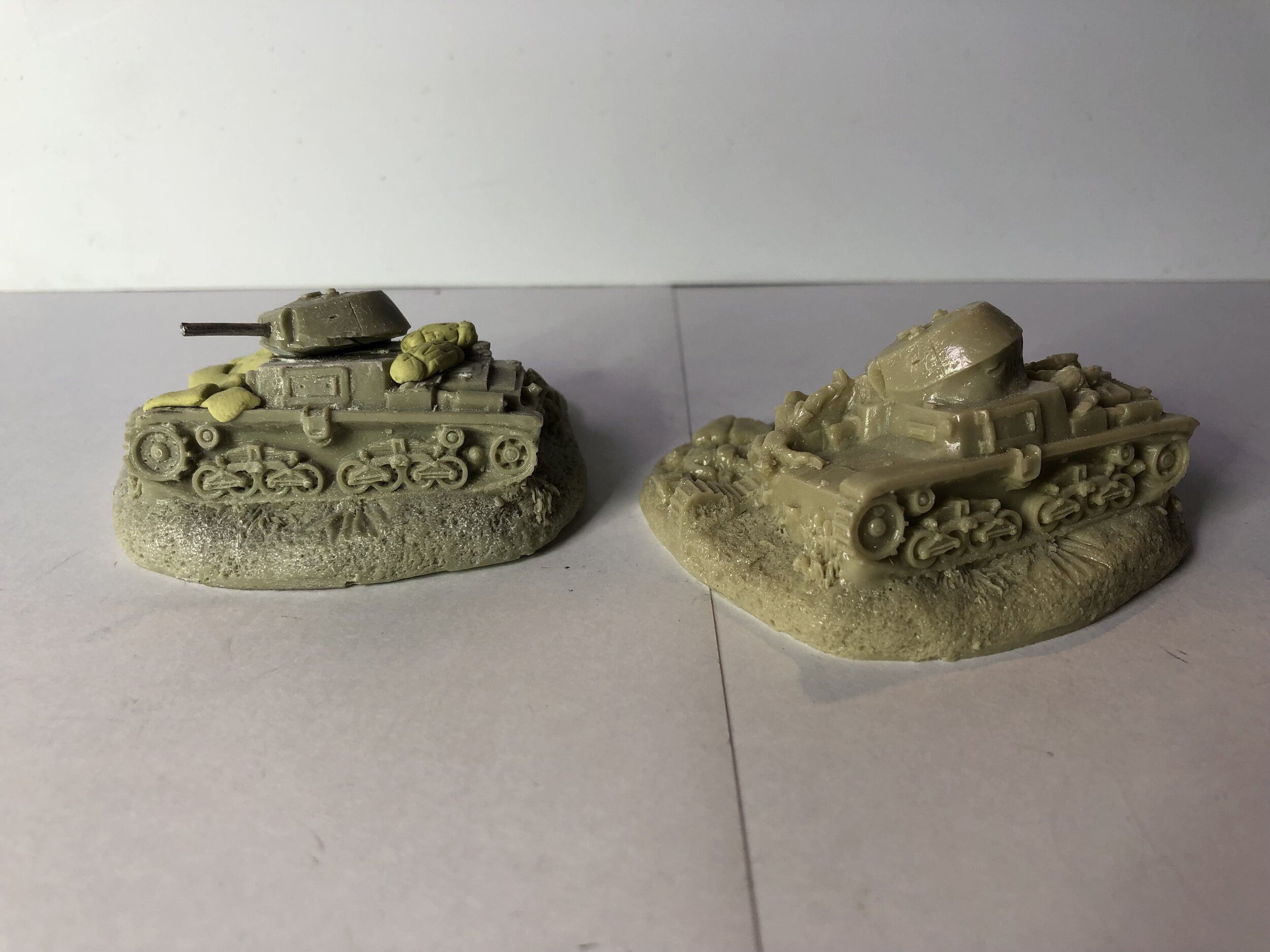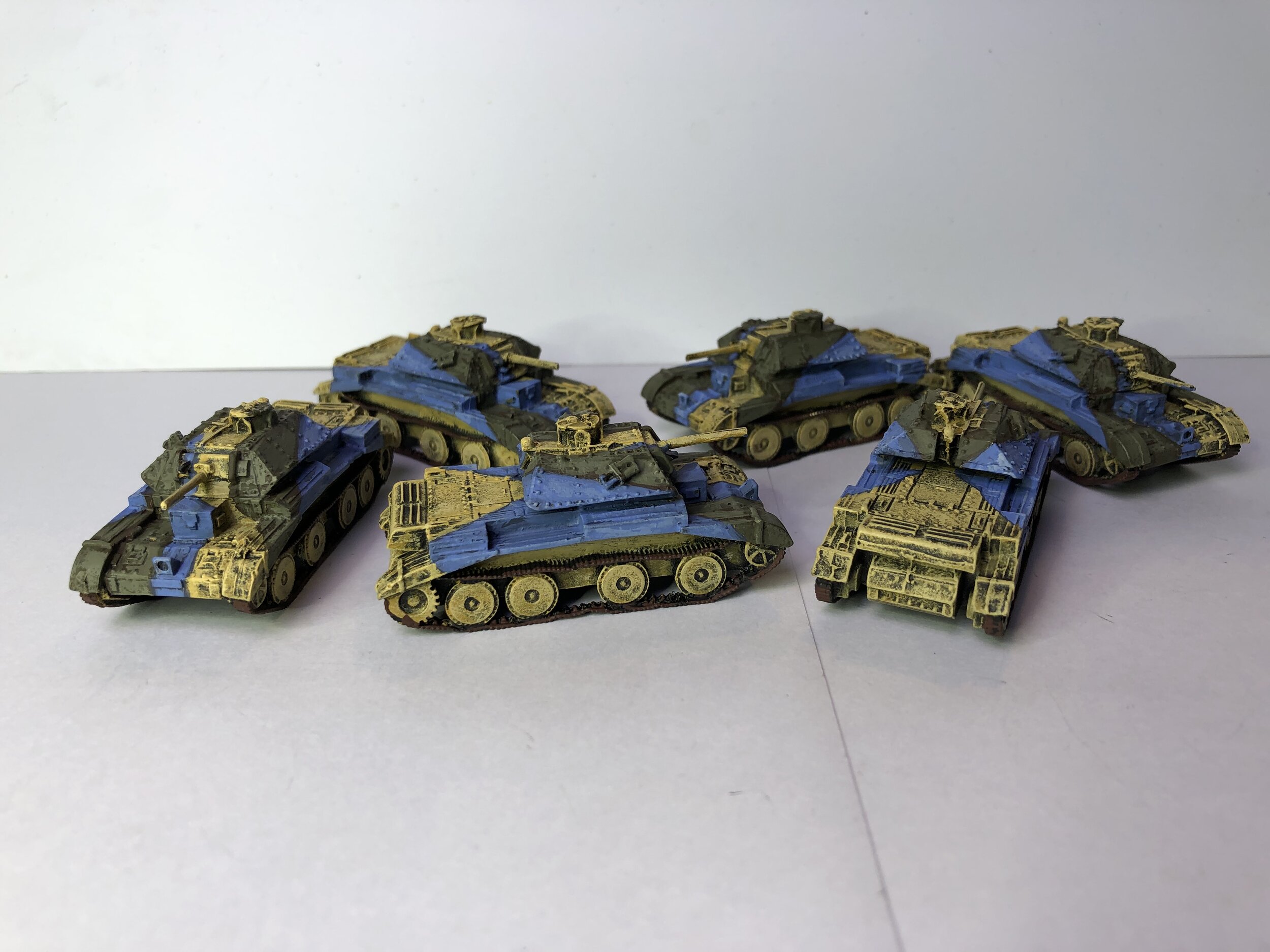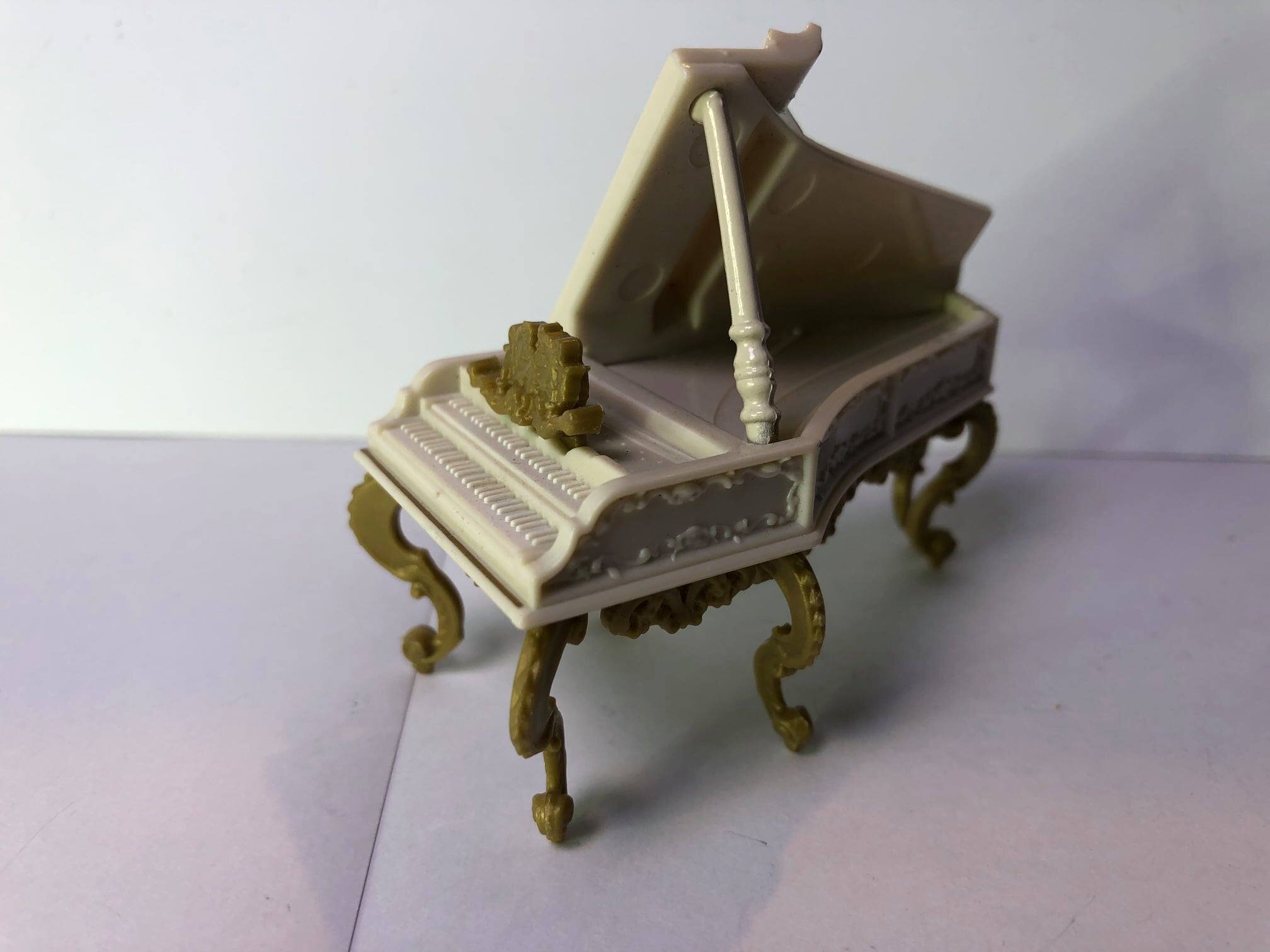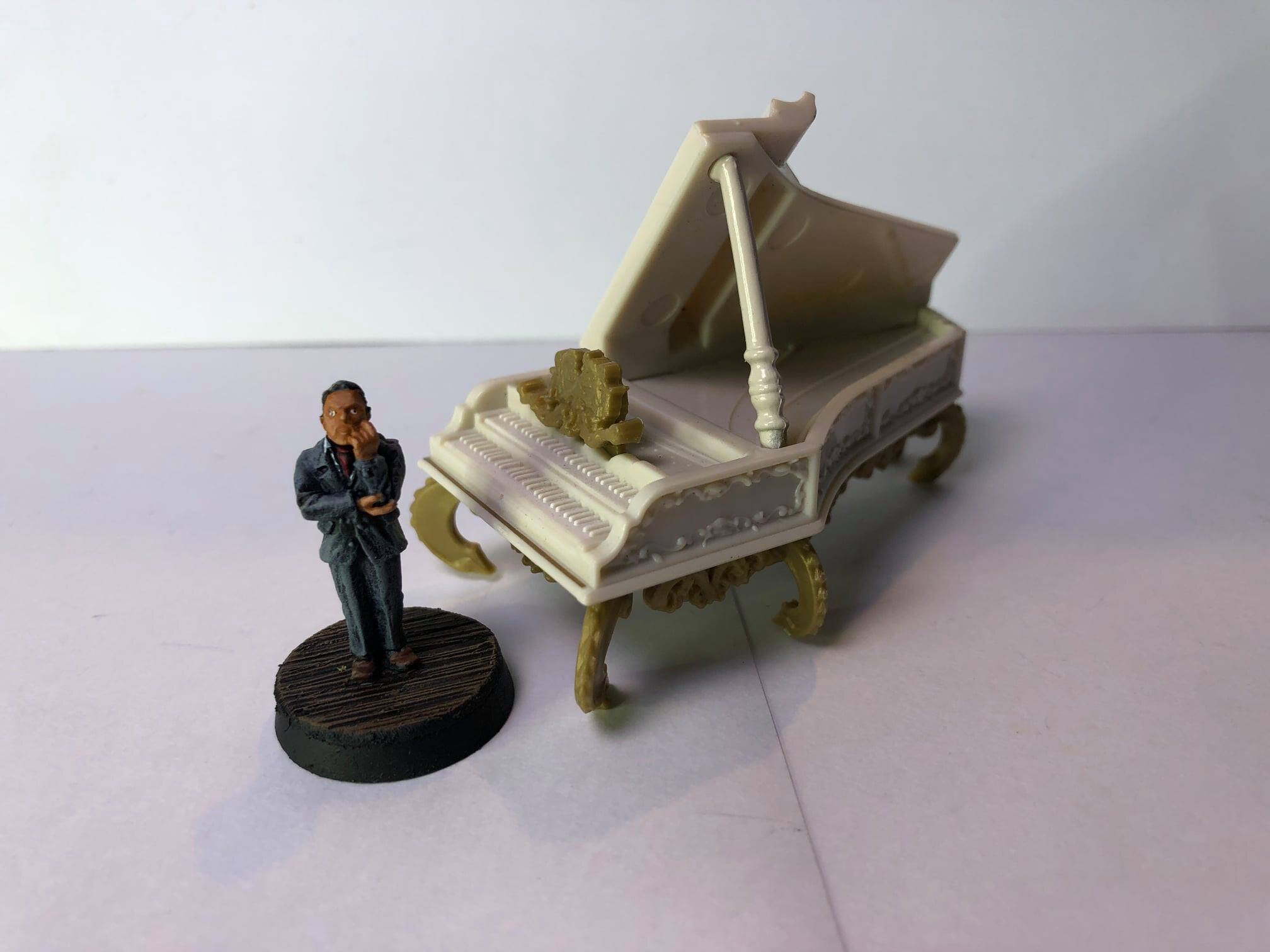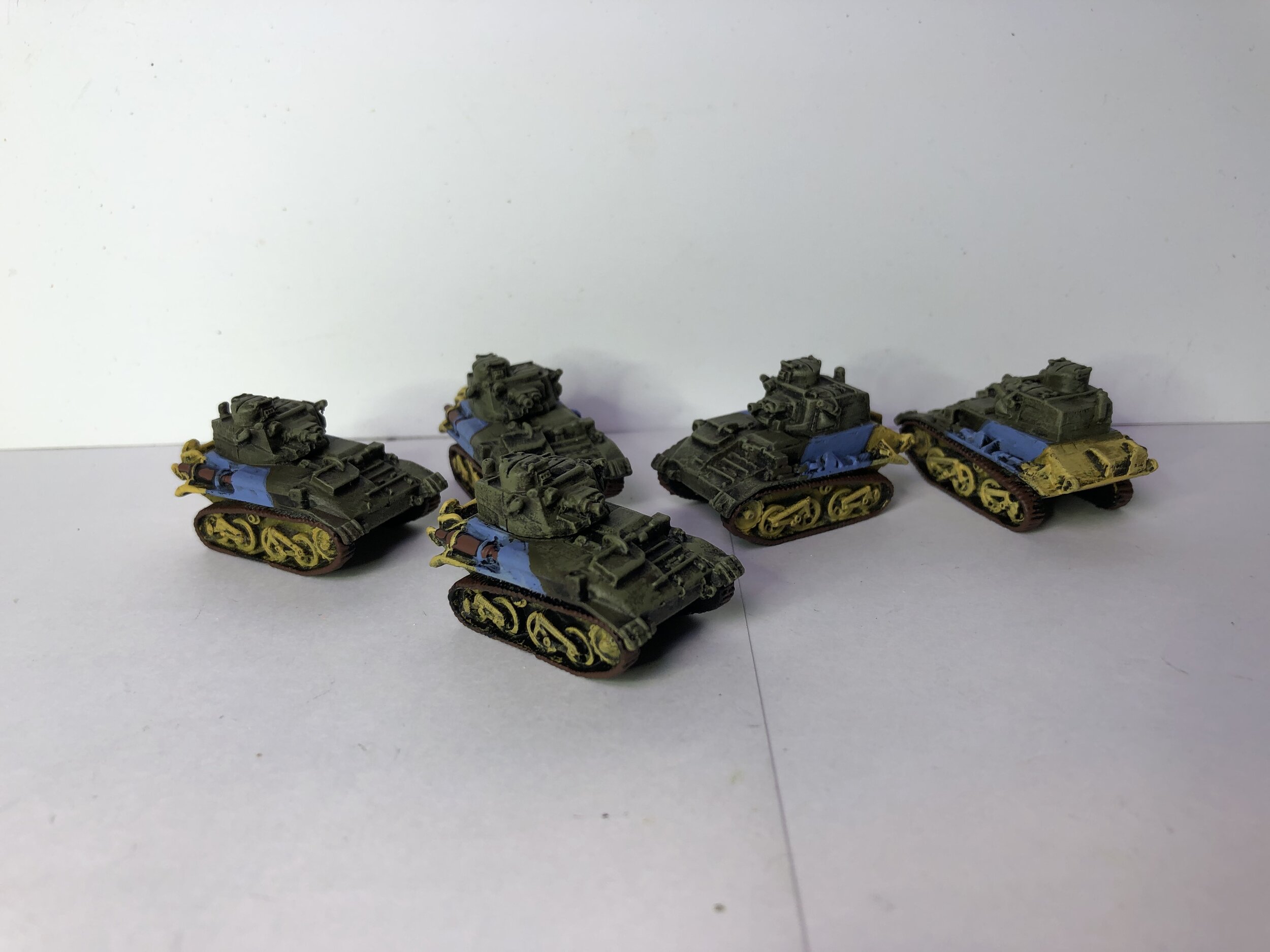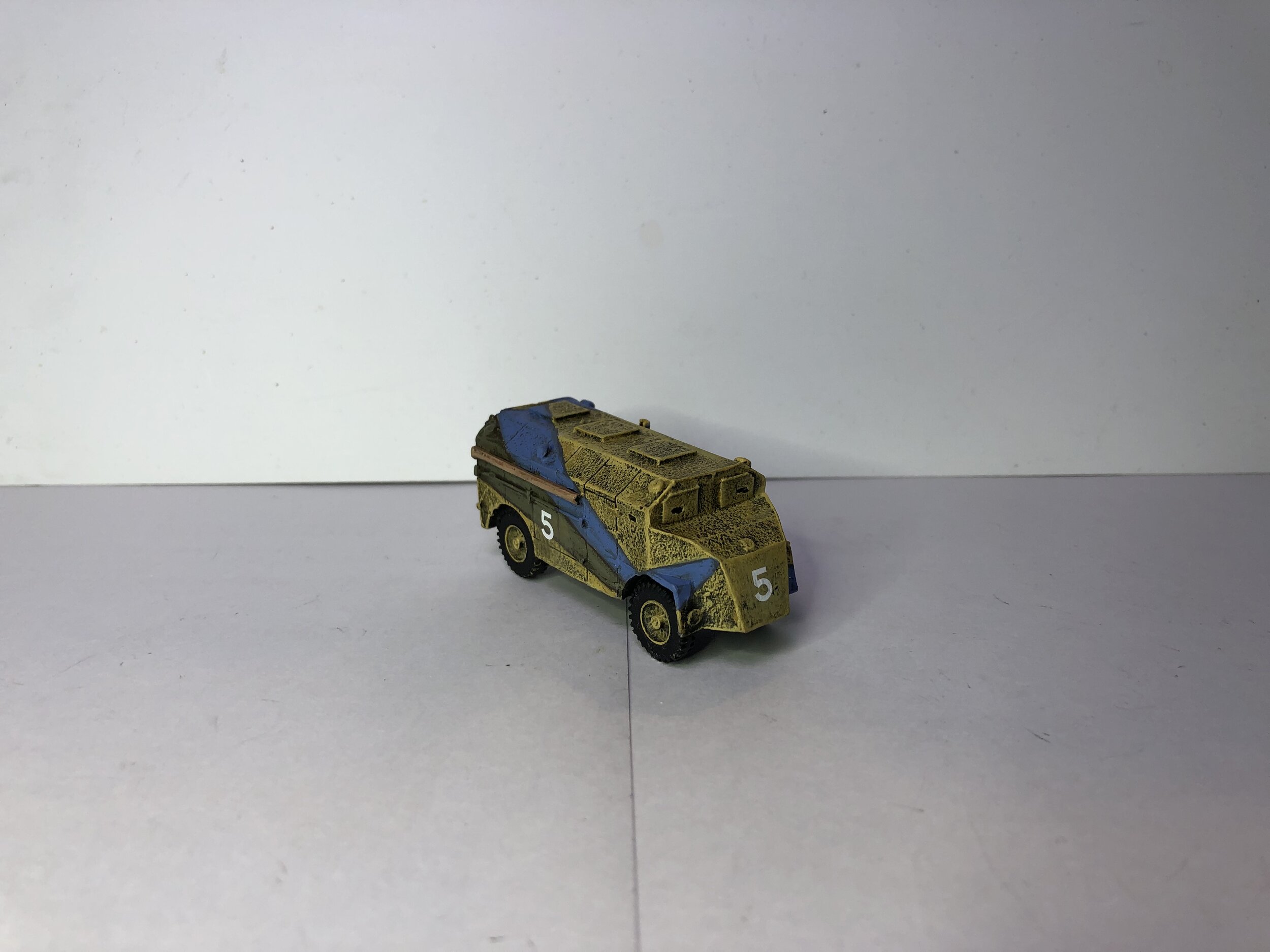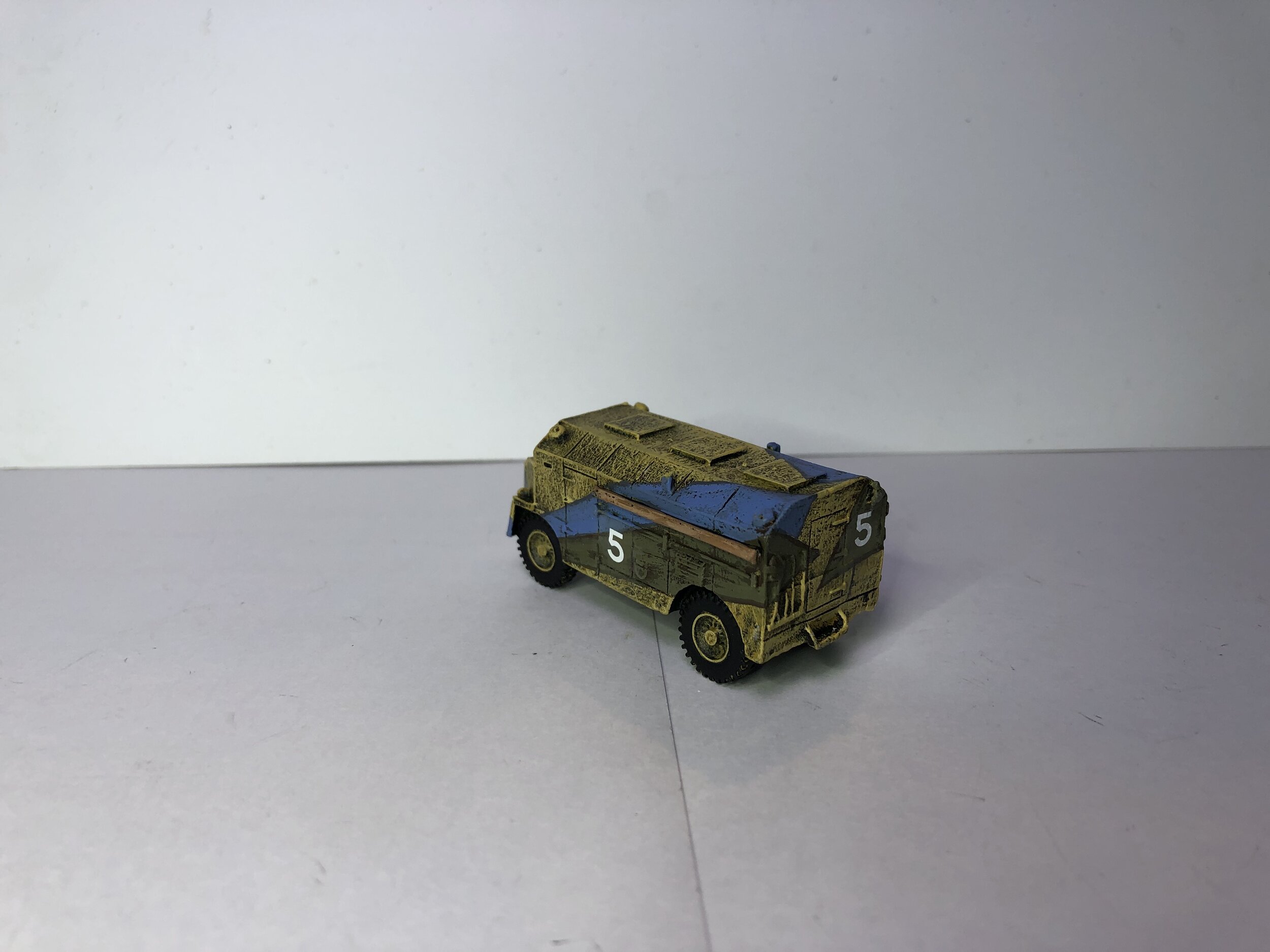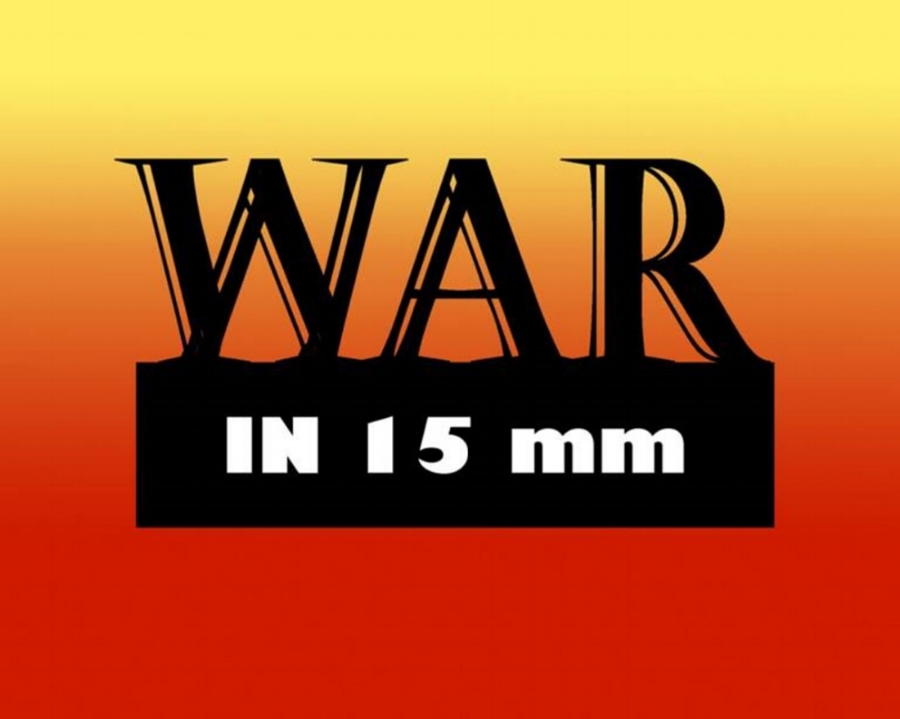August 29, 2021
I started the workbench week painting four of my Command Decision 15mm British 25 pdr field guns. I used beads as shell casings. I didn’t add ground cover because I still have to add the gun crews and they are on order from Peter Pig through Brookhurst Hobbies… could be awhile.
With the first four 25 pdr field guns done, I turned my attention away from my 15mm WW2 North Africa work, and modified and painted a Playmobil terrain piece I got at the swap meet a couple weeks ago.
With that done, I returned to the 25 pdr field guns and did the remaining eight that I currently have. With those done I painted eight Quad tractors by Flames of War.
I ended the week by painting six Command Decision 2 pdr AT guns. Fortunately, Brookhurst had Peter Pig British AT crews so I was able to paint those and give the AT guns their ground cover.
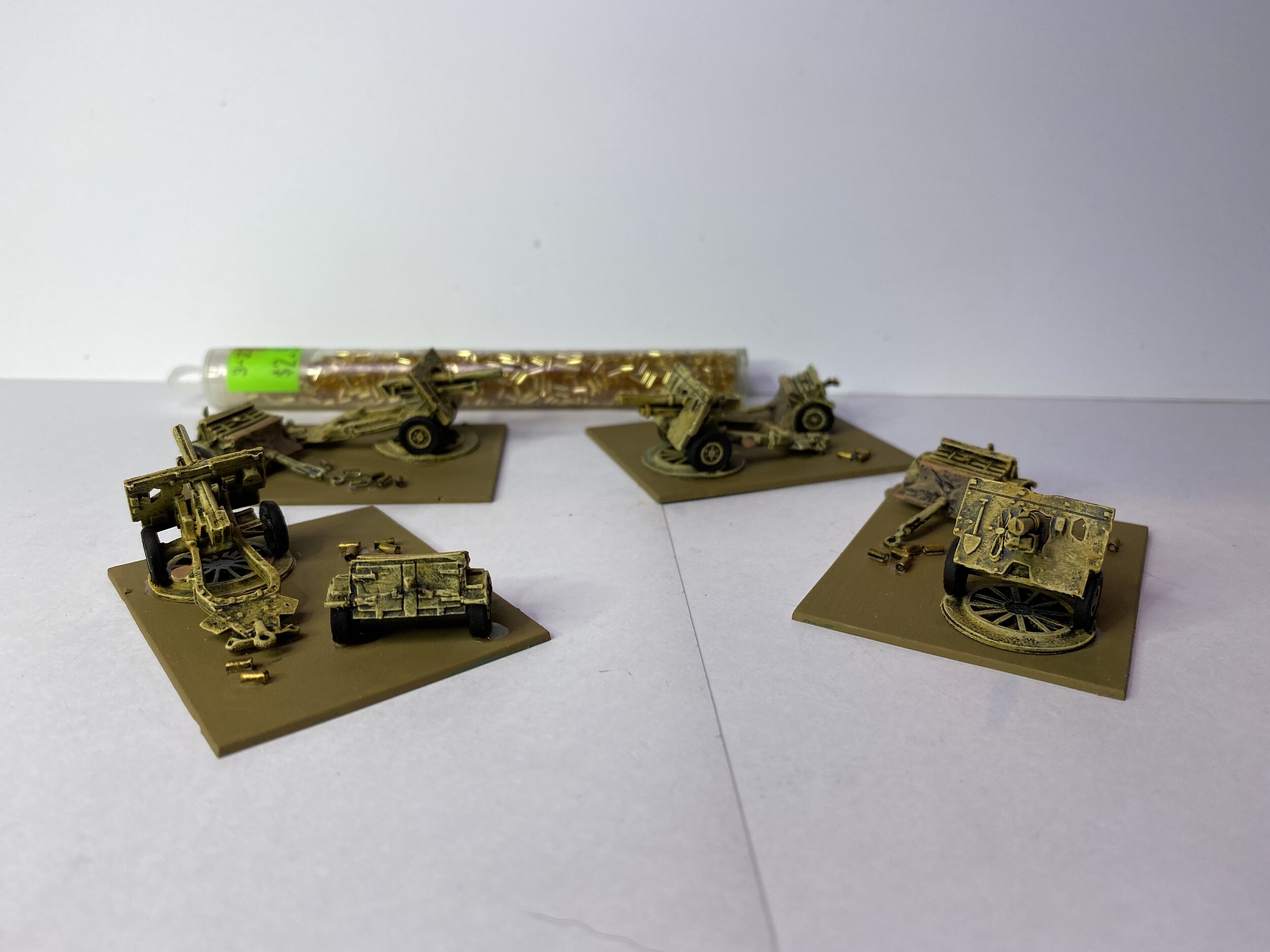
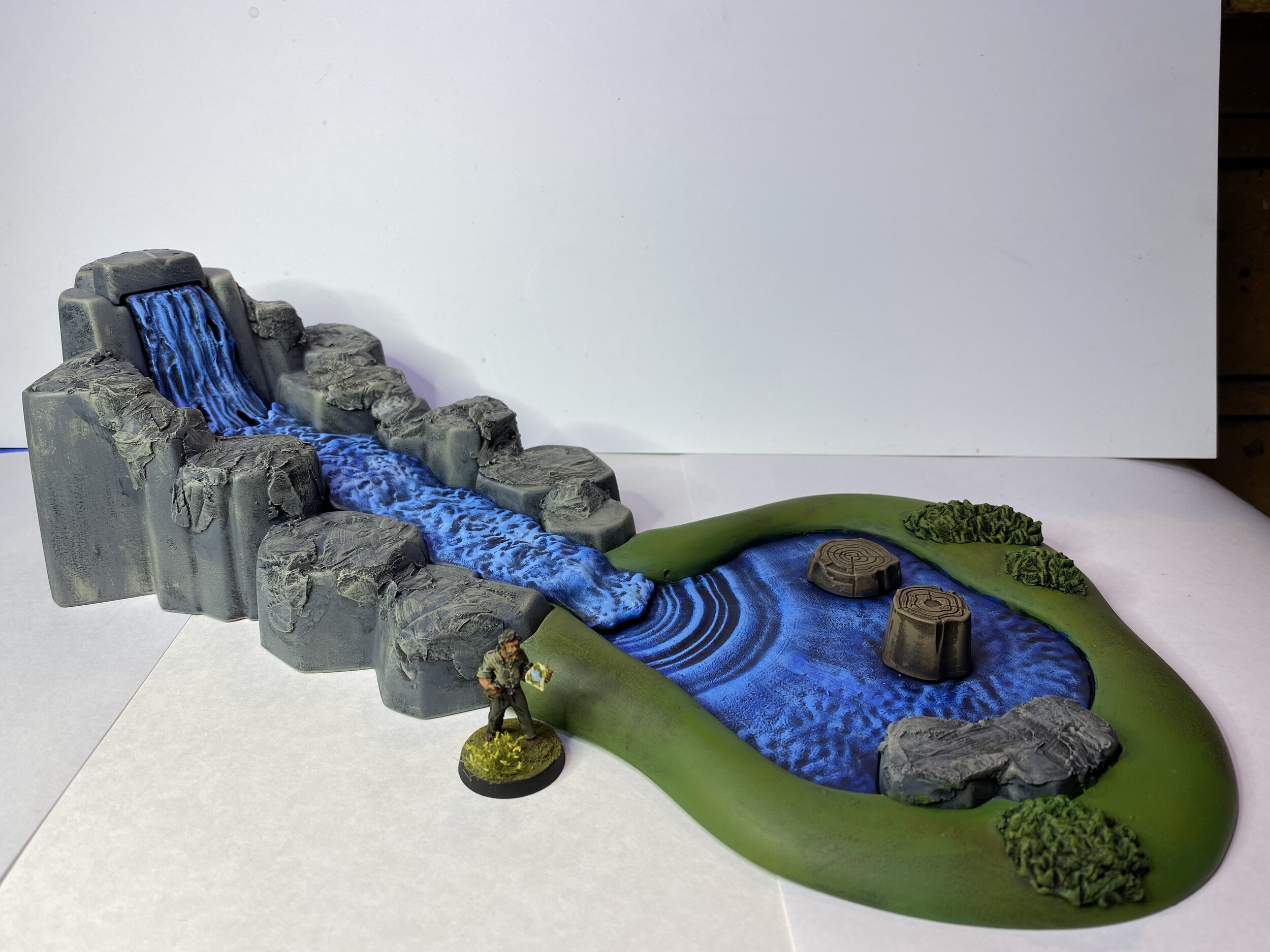
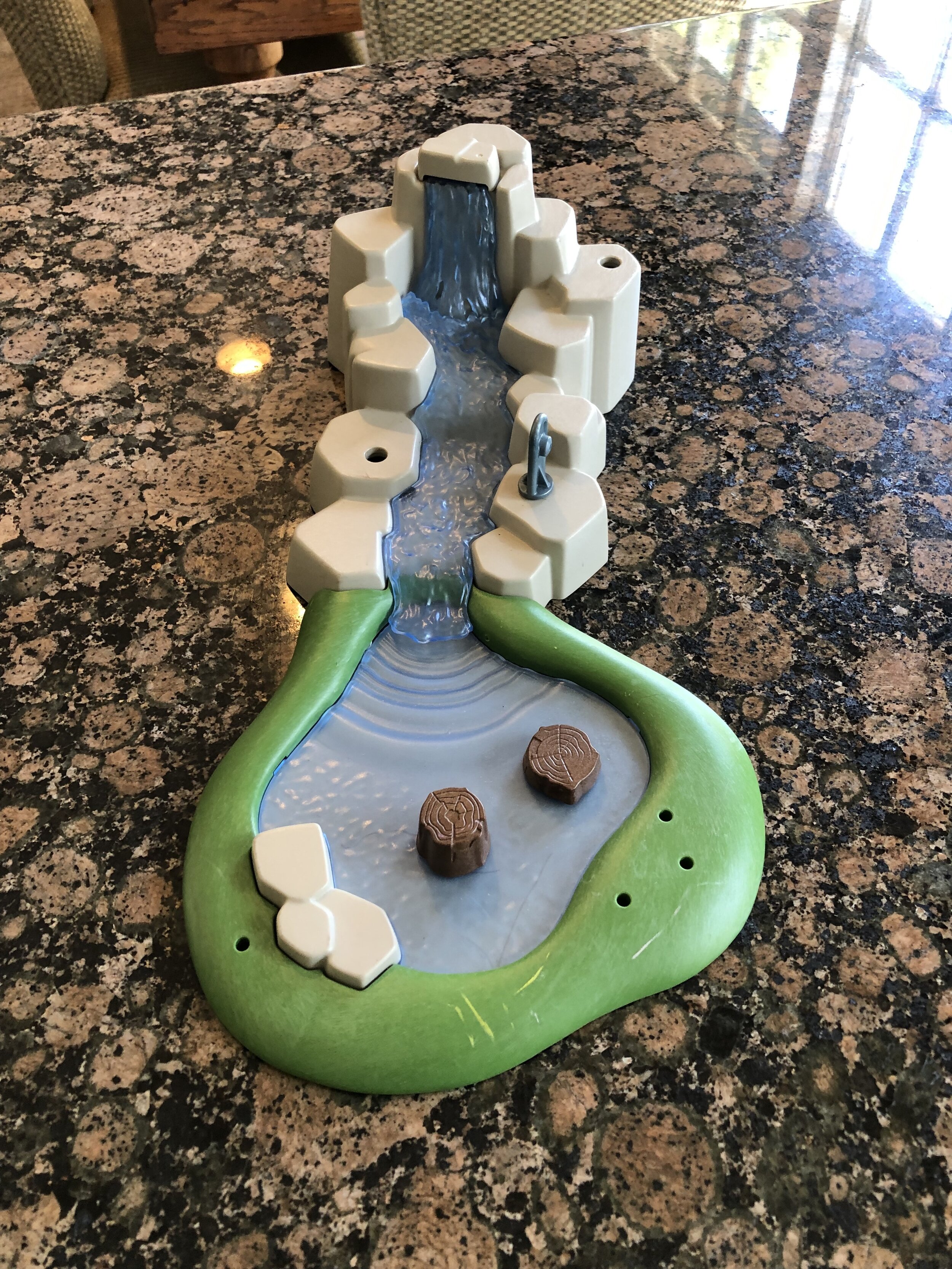
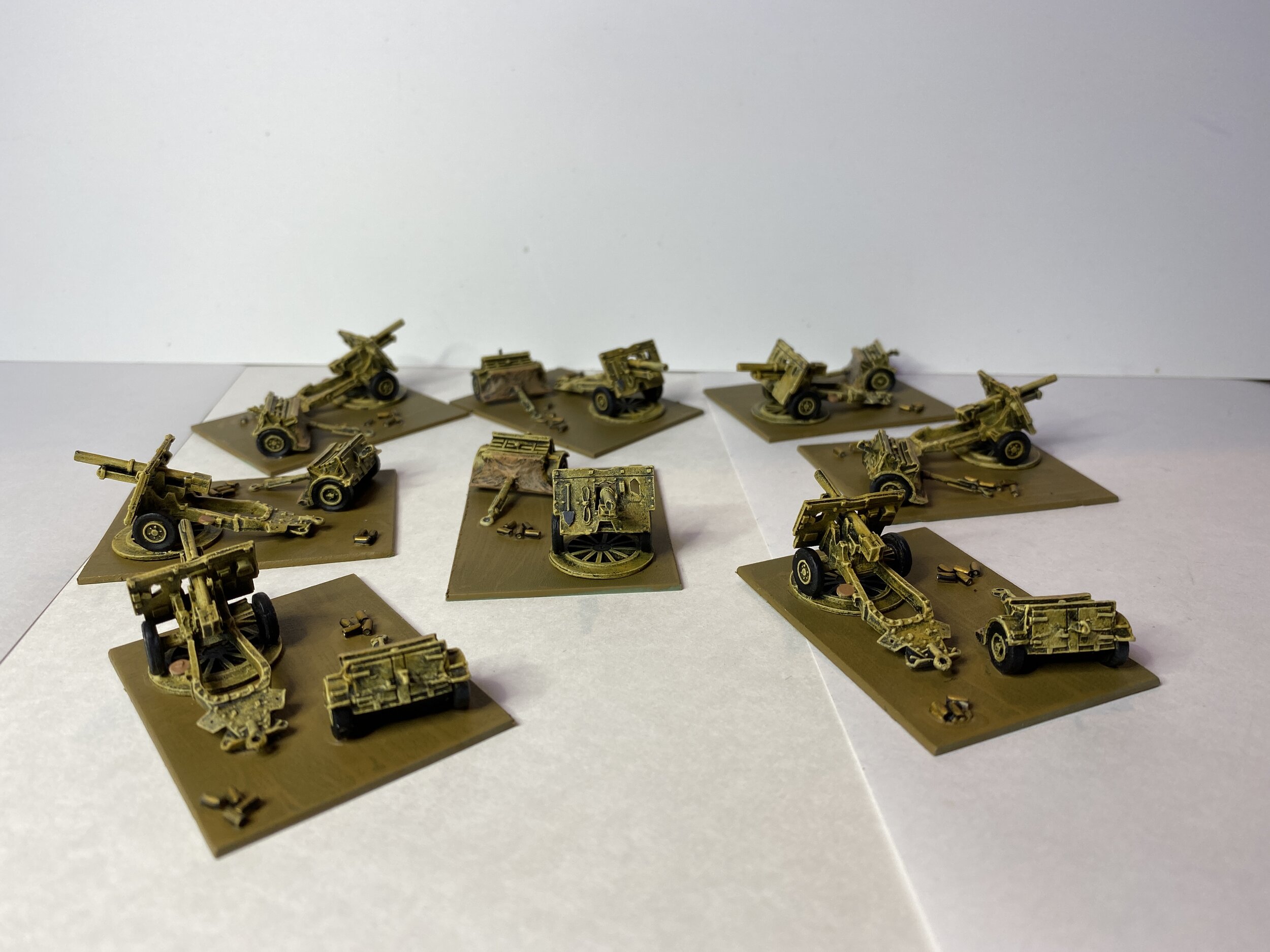
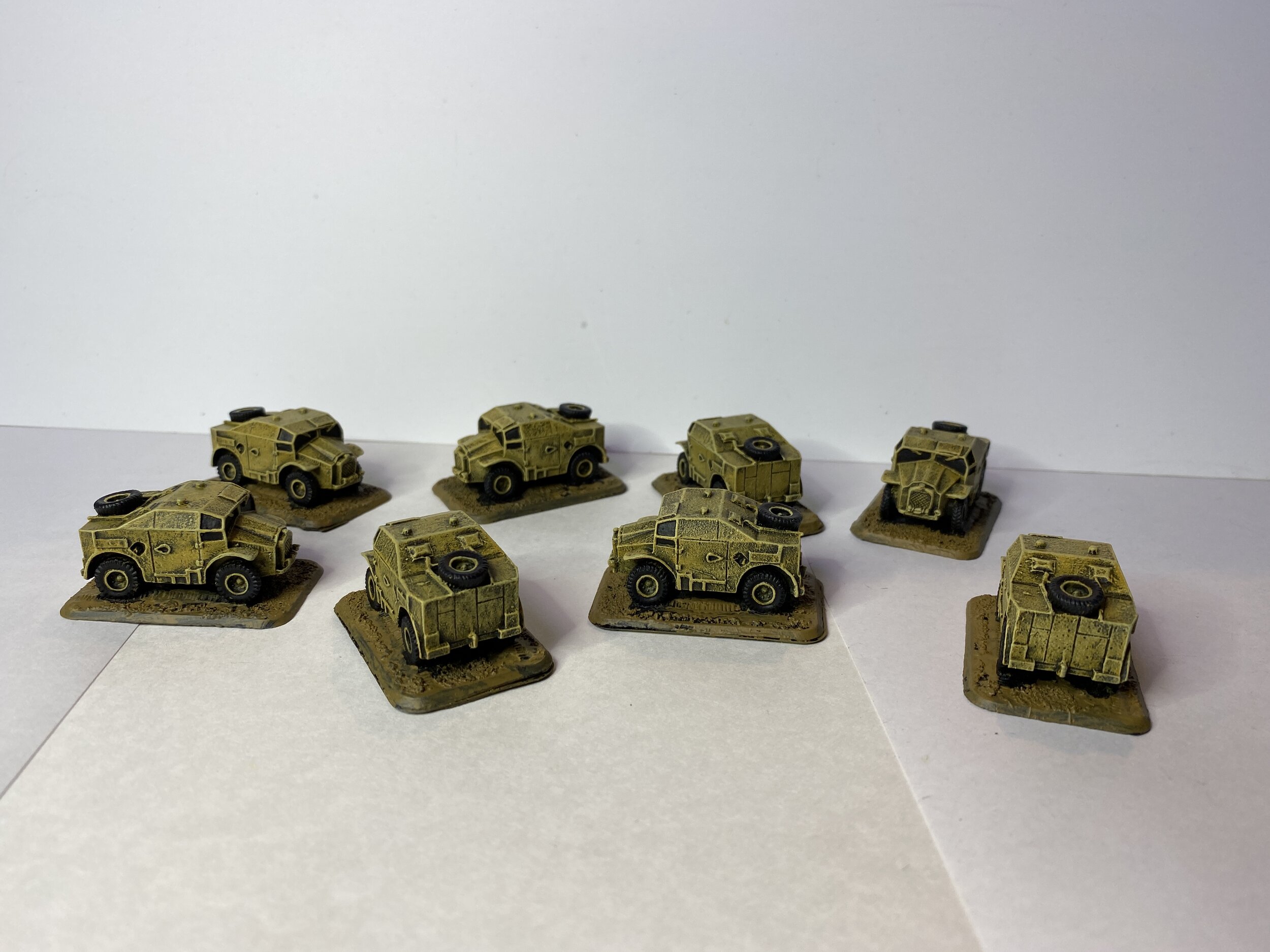

August 22, 2021
This week began with the completion of my Gordon Institute hot air balloon. I was fortunate to find a great base for it at the swap meet. I added a plastic-covered brass rod for the vertical piece keeping it above ground. I then covered the base with Milliput to give it texture. Once dry I gave it a paint job. Came out pretty good.
With the hot air balloon done, I turned my attention back to my 15mm British North Africa collection. I painted the last of the scout cars (Flames of War) and then painted 12 Command Decision universal carriers and three more by Flames of War. My final work of the week was constructing and painting a pack of Command Decision British 25 pdr field guns.







August 15, 2021
I finished up the 15mm British armored cars… did 7 more Humber IIs for a total of 15, and 5 1920 Rolls Royce armored cars. With those done, I now have 40 British armored cars… 15 Rolls Royce, 10 Marmon Herrington, and 15 Humber II. With these done my first storage box for North Africa is full… 200 British vehicles, but not nearly done with the British yet.
I took a little break from my 15mm North Africa to put Gordon Institute logos on the passenger basket of my hot air balloon, and with that done I painted the removable pod cabin for the balloon that will give it two different passenger area options.
Returning to the British 15mm vehicles, I painted up 8 Command Decision Dingo scout cars and three by Flames of War.
Since I will be presenting this 15mm WWII North Africa collections in three galleries… Operation Compass, Operation Crusader, and Gazala 1942…I have been jumping back and forth in my reading between The Sidi Rezegh Battles 1941 and the Osprey issue on Operation Compass. I love The Sidi Rezegh Battles 1941… well written/very readable and lots of great information. I am not nearly as happy with the Osprey Operation Compass; it’s not very readable/simply hard to follow, but what it did have is a bibliography that listed The First Victory/General O’Connor’s Desert Triumph by George Forty. I have three other Forty books on North Africa (two on the Afrika Korps and one on the Desert Rats). They are pictorials and great references. So this week I have ordered The First Victory which is Operation Compass. I’m really looking forward to its arrival.
Last weekend at the swap meet I found the Battle Bus and began taking it apart to create a hot air balloon for the Gordon Institute. As of Friday (this week) I had the balloon done but had not yet determined how I would base it for flight… that base had to be removable both because I want the balloon to be able to be used on the ground and in the air and for reasons of storage. This week at the swap meet (Saturday/yesterday) I found the answer to my basing problem… The World’s Smallest Punching Bag. I immediately realized that I could unscrew the springy vertical element and bag from the base, and I would have the perfect base for my Gordon Institute hot air balloon. I paid $4. It’s $15 on eBay. For my vertical pole I used a solid brass rod surrounded by an Evergreen tube. I then put the vertical piece in the hole that had held the punching bag and surrounded the vertical with Milliput. I let it sit until it was hard as a rock. I will be spreading more Milliput over the base today to give it texture. When on the vertical, the balloon stands 18 inches which is good enough for my purposes and it is removable. Getting close to the finish line on this one.
















August 8, 2021
This week began with the completion of my work on my 15mm Marmon Herrington MkII armored cars. With those done I turned my attention to another group of 15mm British armored cars… Rolls Royce/1924. They were completed by the close of the week and I had time to start painting my Humber II armored cars. With the completion of the Rolls Royce AC my use of the caunter camouflage scheme is done until the fifteen Peter Pig Mk VIBs arrive from Brookhurst. With the exception of those remaining Mk VIBs, I believe that all the remaining equipment I will be doing for this project (British, German and Italian) from this point on will be in single color… some form of desert yellow. By week’s end I finished eight of my fifiteen Humber IIs.
Though I am currently working on my 15mm North Africa collection, my mind is never far away from thoughts of the Gordon Institute. For a while I have believed that the Institute needed a hot air balloon. During my trip to the swap meet on Saturday, I found the toy that I believe will serve the purpose. It is the Battle Bus from Epic Games. It cost me $5… it is a discarded toy with pieces missing. In a long career of taking toys apart for repurposing this was as tough a nut to crack as I have seen in a long time, but I got it apart. I added a new bottom and sides to the passenger basket using Evergreen plastic. I strapped the large cables that originally held the balloon to the bus to the basket supports using floral wire and thus giving it a more unified feel. There is still some important detailing to do plus the all-important painting, but I made a lot of progress on it today in just a couple hours.
On Friday I contacted an old friend from my high school days who was the owner of the Last Grenadier game shop until he retired. I was checking to see if he could save me some money by lending me two Osprey Campaign books from his extensive collection… Operation Compass 1940 (#73) and Operation Crusader 1941 (#220) Fortunately, he had them (apparently unused) and told me I could use them for this project. I picked them up Friday afternoon and when I got home with them, I looked through Operation Compass and discovered an interesting photo… a windmill. Apparently, the dominant structural feature at Beda Fomm was a windmill. I remembered that years ago I purchased a 1:87 scale Woodland Scenics windmill from the bargain table at Arnie’s trains. It was cheap and still in the blister pack. Approximately two decades later, I found it… still in that unopened blister pack. I will be including it as part of my Operation Compass collection.
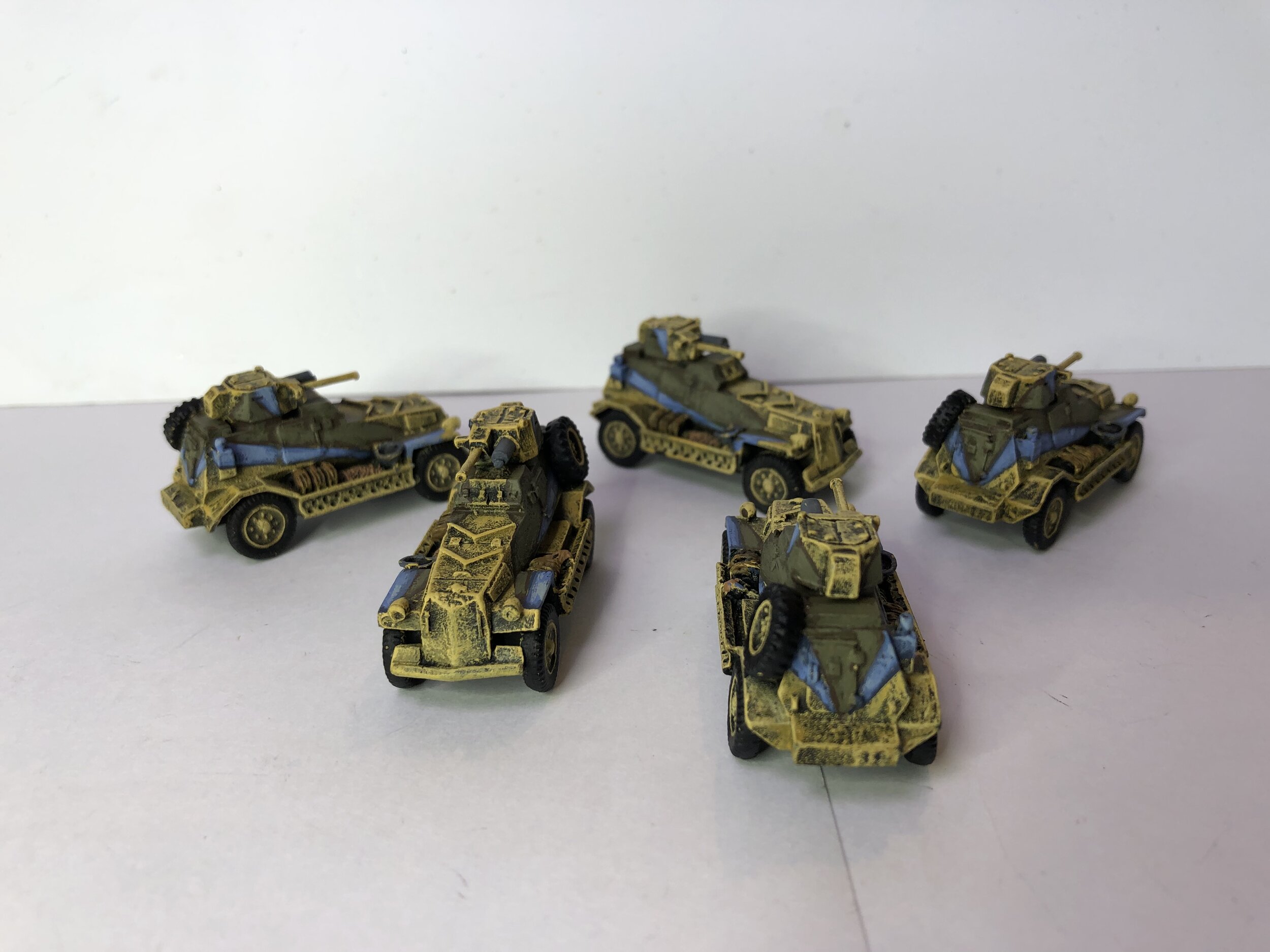
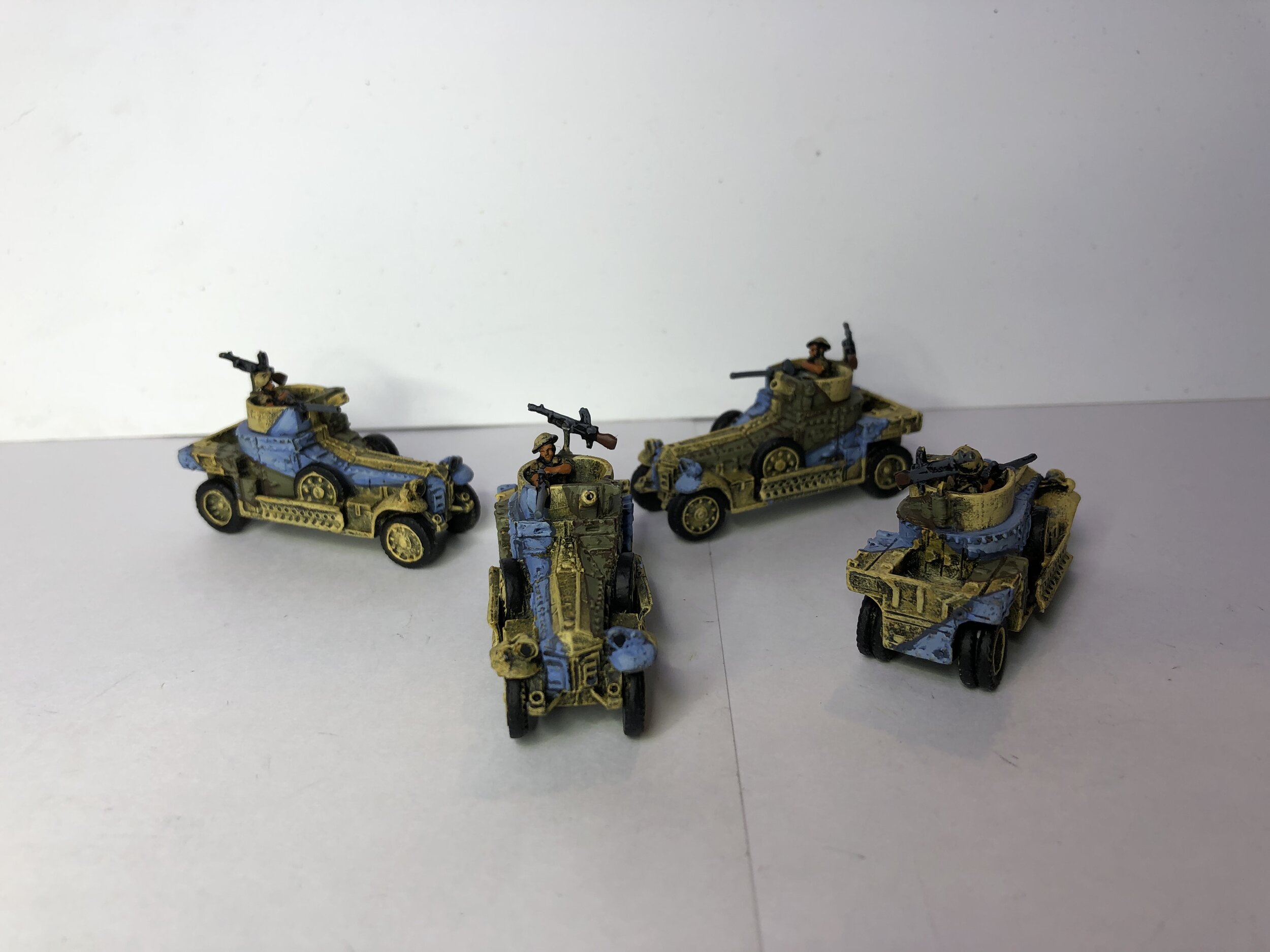
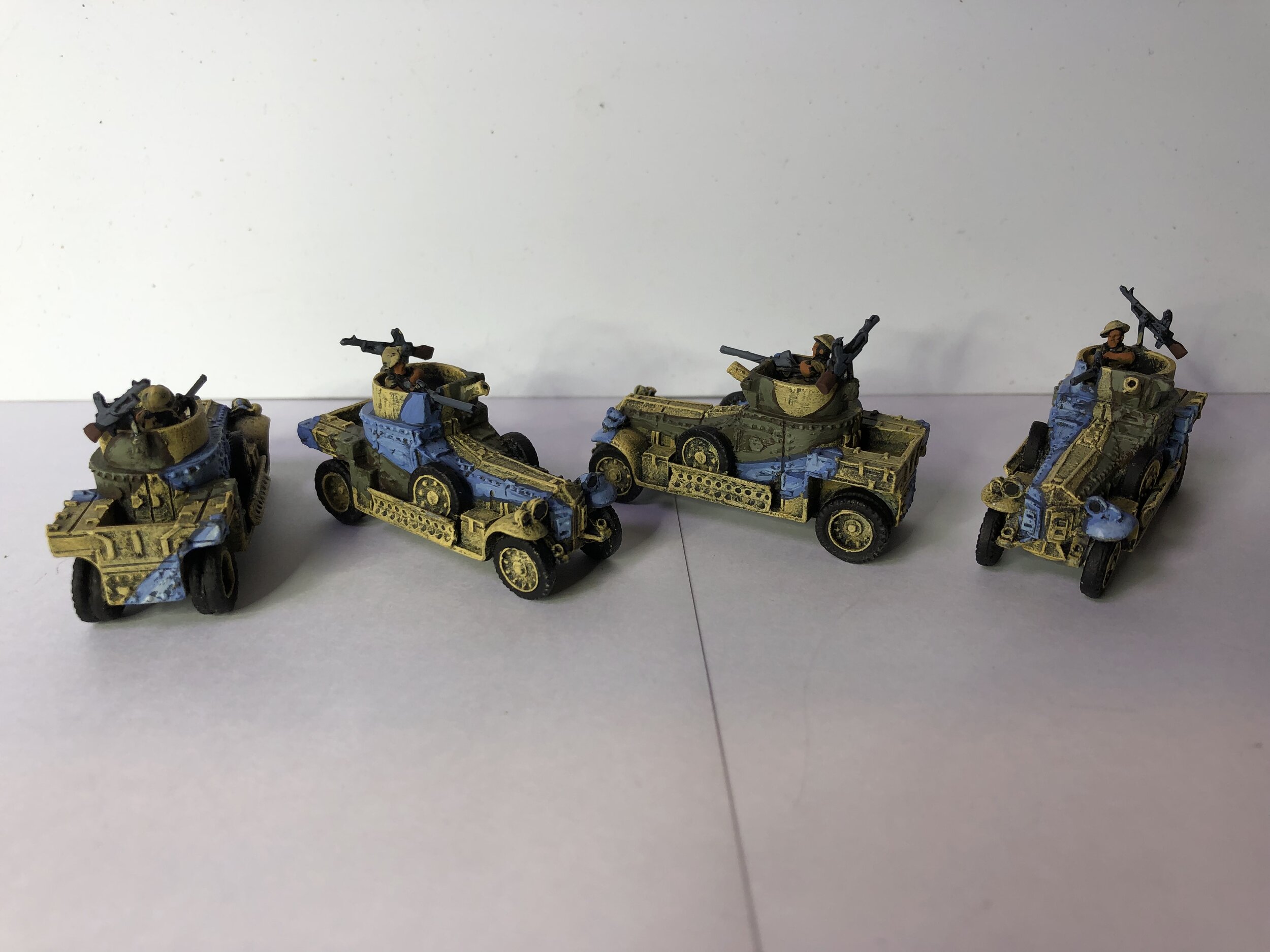

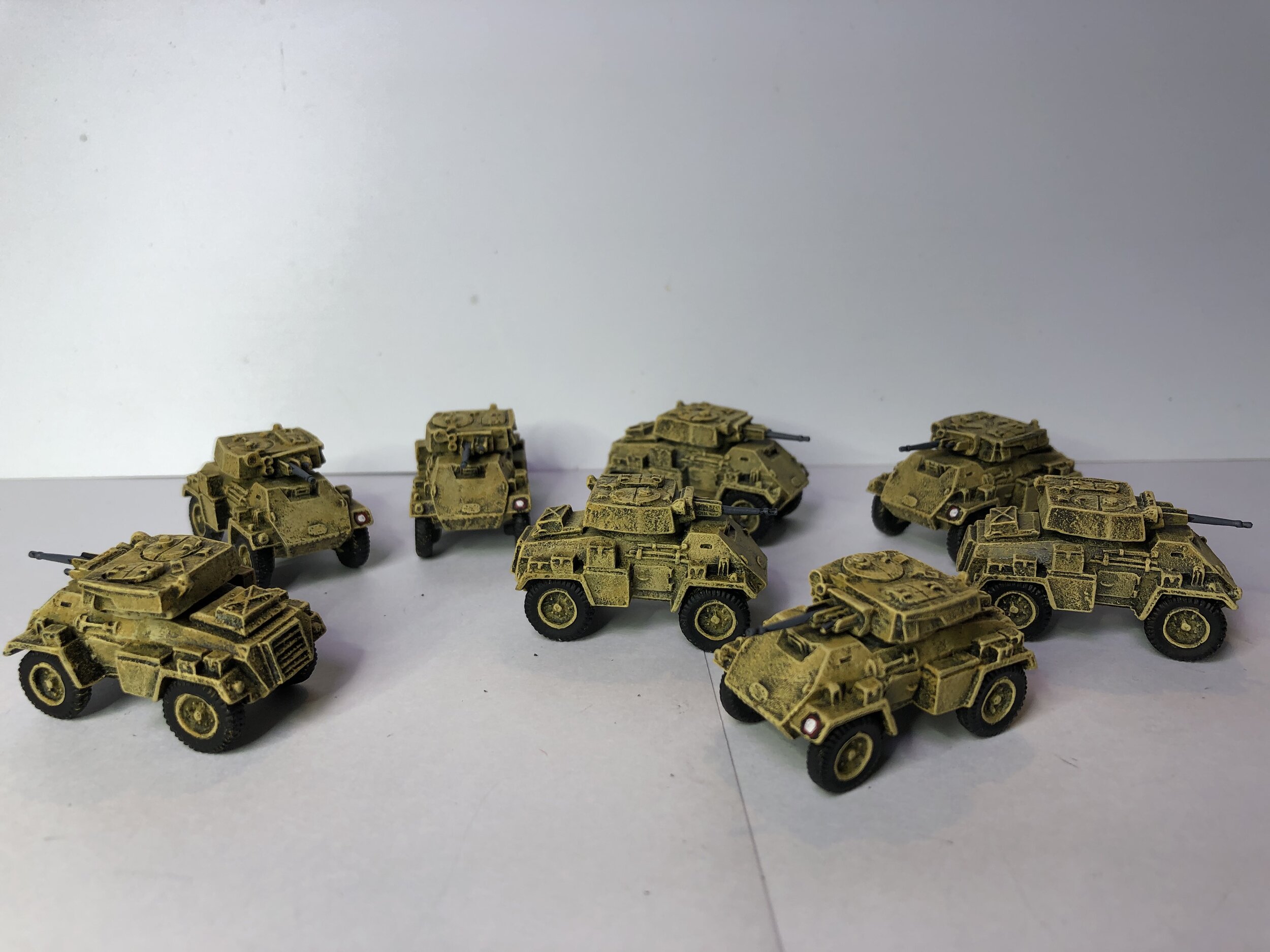

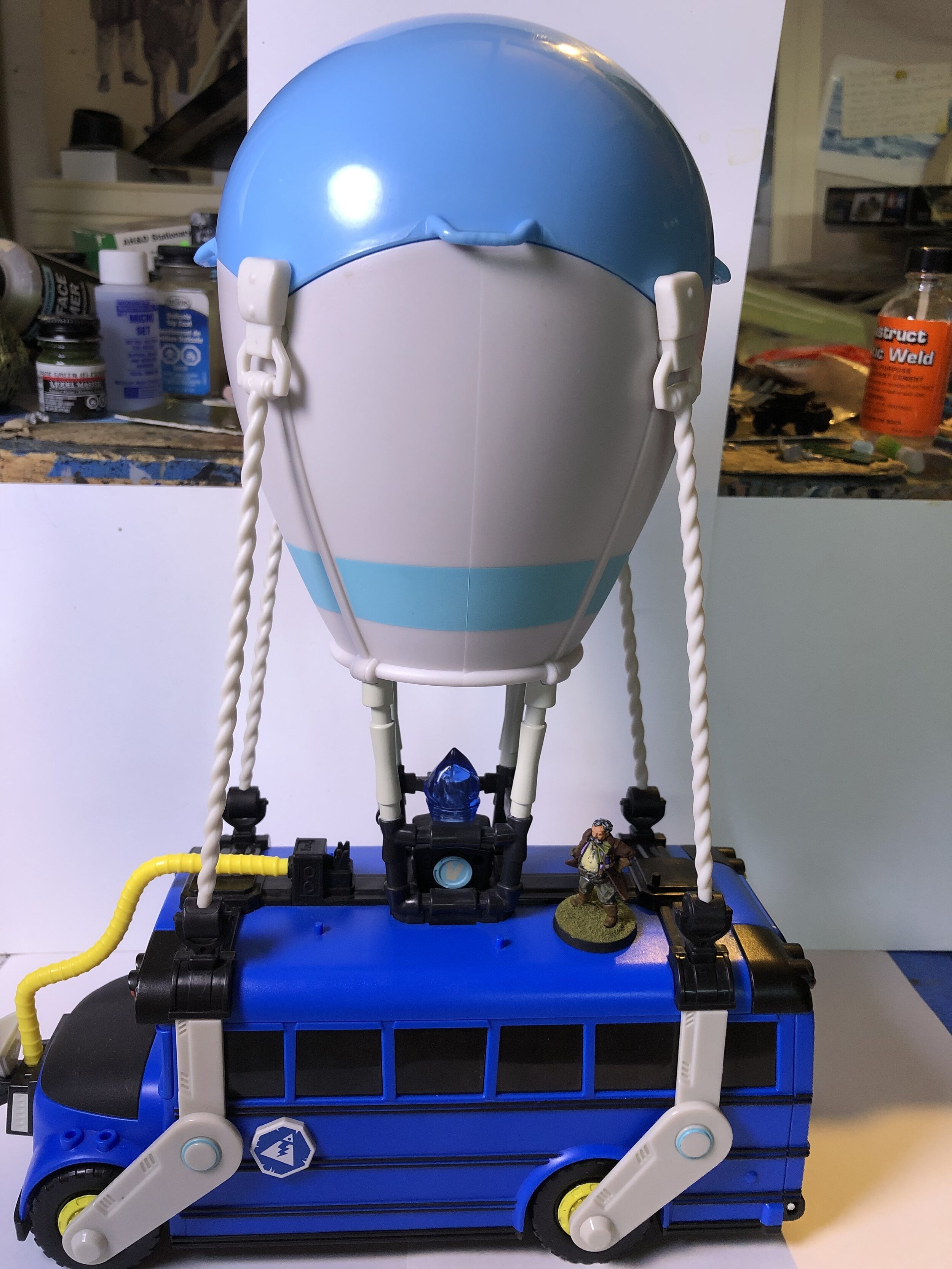
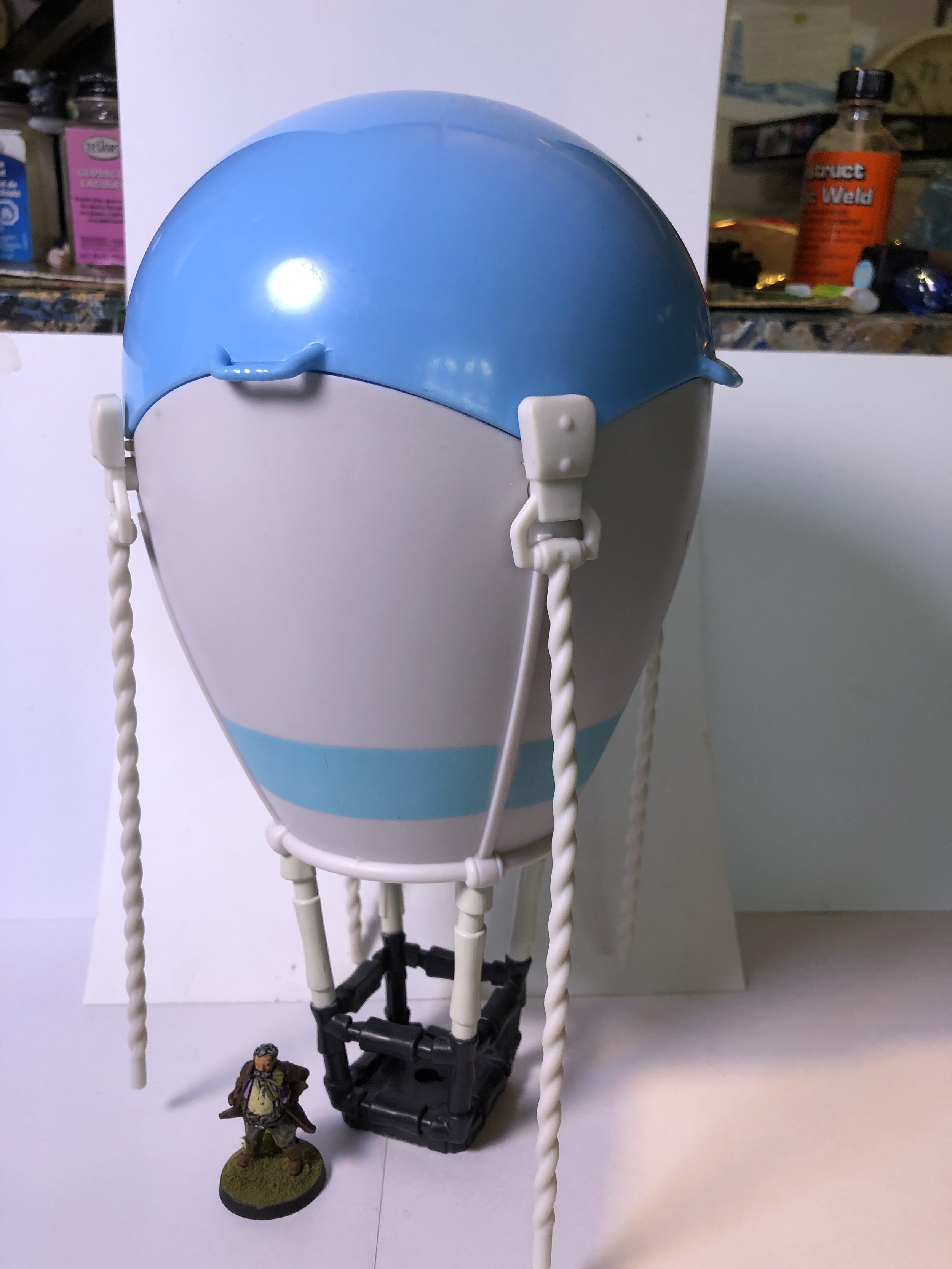
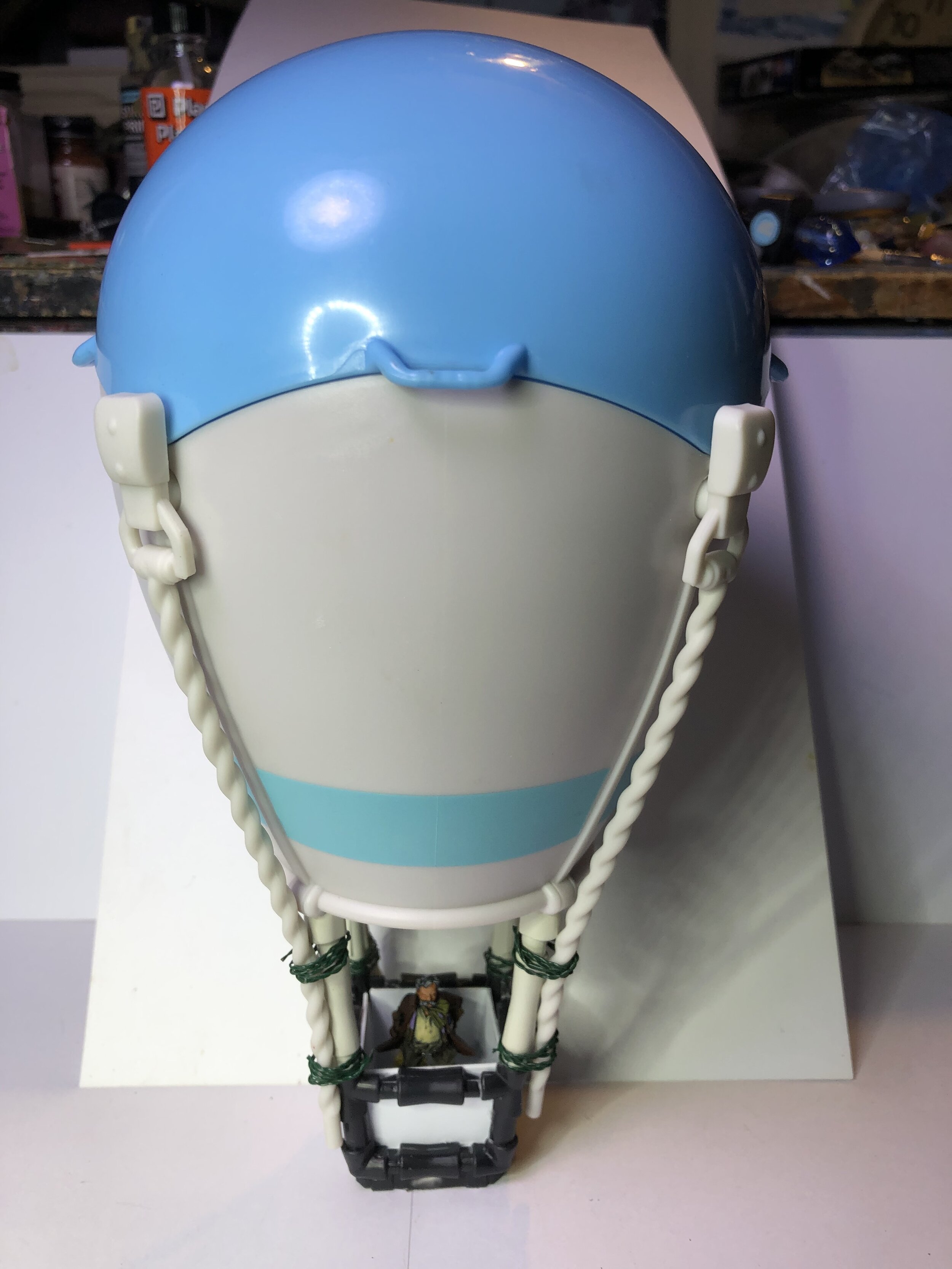
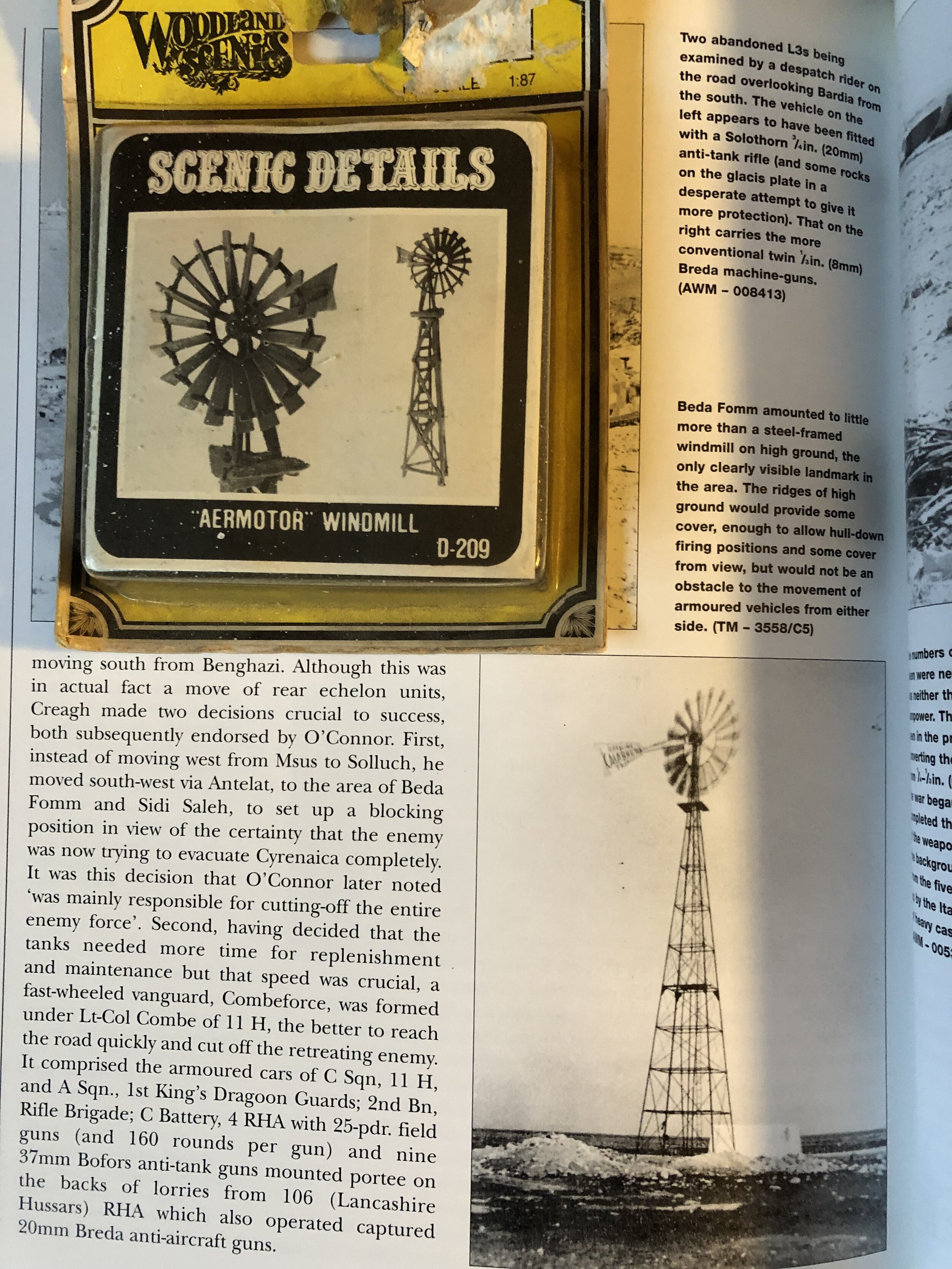
August 1, 2021
I began the workbench week modifying some Peter Pig destroyed M13/40 Italian tanks. Because North Africa is a desert war, there are not a lot of options for significant terrain features for this 15mm collection. Destroyed tanks is one of those options. Peter Pig makes a destroyed resin Italian tank. The problem I have with it is that it is cast as a single piece and has dead bodies all over it and those are a little undersized. I wanted something more generic; so I cut the bodies off the tank and ground. I sawed the current turret off the tank and gave it a new gun barrel. I then reset the turret in a different direction. I’ll be doing some version of this with four of those tanks.
Last weekend I found a toy harpsichord at the swap meet. The body of the harpsichord was perfect for 28mm but the legs were too long, so I cut them down… the cuts worked out fine. One of these days I’ll give it a paint job.
I next returned to British armor. I painted five more Mk VIBs. I have five additional on order, but that will take a while. I then painted six A13 cruisers. That brings the total of my painted British tanks for North Africa to 116. As stated above, I have five Mk VIBs on order with Brookhurst.
With the tanks done, I returned to do a second British Dorchester armored command vehicle. My research tells me that Dorchesters No. 1, No. 2 and No. 3 are the ones captured by the Germans. I know there is a Dorchester No. 5 and since the Germans captured only 3, then Dorchester No. 5 remained in British hands. I did my first British Dorchester with no number and I gave the second a big white 5.
I ended the workbench week doing British armored cars… the Flames of War Marmon Herrington Mk IIs. I completed six… four to go.
